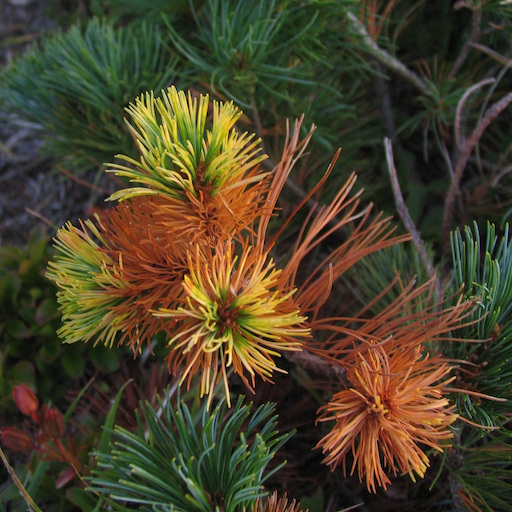Bykasov V. E., Egorova T. V. Salmon Herd Structure and Spawning Dynamics in Southwest Kamchatka. PACON 2000. The Ninth Pacific Congress on Ocean Science and Technology (OST). Abstract Booklet «The Pacific Century». Honolulu. Hawaii. 2000. P. 131.
SALMON HERD STRUCTURE AND SPAWNING DYNAMICS IN SOUTHWEST KAMCHATKA
Valery Bykasov and Tamara Egorova
Institute of Volcanology, Far East Branch, Russian Academy of Sciences
The purpose of this work is to study biostructure (sexual and age composition, length and mass of bodies, relative mass of gonads and fertility) of humpback, blueback, king and hoopid salmon spawning herd under its correlation with salmon number dynamics from the one hand and the study of these natural processes influence on peculiarities and priorities of social and economical development of south-west Kamchatka from the other hand. Such statement of the problem is conditioned by the fact that in the available literature on salmon dynamics this correlation either is not taken into account or is taken into account insufficiently fully. Meanwhile the short in its calculation introduces additional difficulties in organization of rational salmon fishery in near-shore and internal waters of Kamchatka as well as the whole Far East.These phenomena research using the example of the rivers Bolshaya and Ozernaya shows that the part of males in the herd and the relative mass of gonads of both sexes of all salmon species vary in direct dependence but the mass and length of males bodies, populations pubescence speed and absolute individual females fertility are changed in reverse dependence on the number of fish individuals migrating for spawning. Moreover, in the course of research it was determined that the decrease of males number and fish body sizes with simultaneous index of their gonades maturity before the very spawning climax points at coming increase of number of salmon herds entering rivers. And so far as above peculiarities are noted annually they can be used as one of criteria of operative forecast of coming salmon quantity and the volume of its catch out.
And in the whole the use of above criterion in every-day practice can promote more rational catch out of salmon by fishing enterprises of the coast. And if to take into account the fact that during last years fishing industry of the near-shore region was practically destroyed the use of this research recommendations can promote more rational catch out of salmon and, as a consequence, rebirth of fishing industry and improvement of social-economical situation of both coasts of Kamchatka. It can be quite helpful as salmon which not long ago made up only 5–7% of all fish and sea products caught up in the region provided Kamchatka national economy with 30–33% of commodity products (in monetary calculation).
СТРУКТУРА СТАДА, ДИНАМИКА НЕРЕСТА И РОЛЬ ЛОСОСЁВЫХ В СОЦИАЛЬНО-ЭКОНОМИЧЕСКОМ РАЗВИТИИ ЮГО-ЗАПАДНОЙ КАМЧАТКИ
В. Е. Быкасов. Т. В. Егорова. Институт вулканологии ДВО РАН
Целью данной работы является исследование биоструктуры (половой и возрастной состав, длина и масса тел, относительная масса гонад, плодовитость) нерестового стада горбуши, красной, чавычи и кижуча в её взаимосвязи с динамикой численности лососёвых с одной стороны и изучение влияния этих природных процессов на особенности и приоритеты социально-экономического развития Юго-Западной Камчатки с другой. Такая постановка проблемы обуславливается тем, что в имеющейся литературе по динамике лососевых эта взаимосвязь либо не учитывается вовсе, либо учитывается недостаточно полно. Между тем её недоучёт привносит дополнительные трудности в организацию рационального ведения промысла лососевых в прибрежных и внутренних водах не только Камчатки, но и всего Дальнего Востока.
Исследование этих феноменов на примере рек Большой и Озерной показывает, что доля самцов в стаде и относительная масса гонад обоих полов всех видов лососевых варьирует в прямой, а масса и длина тела самцов, скорость полового созревания популяций и абсолютная индивидуальная плодовитость самок изменяется в обратной зависимости от численности мигрирующей на нерест рыбы. Кроме того, в ходе исследований было установлено, что снижение доли самцов и размеров тела рыб с одновременным показателем зрелости их гонад перед самым разгаром нереста говорит о предстоящем повышении численности лососёвых стад, входящих в реки. А поскольку отмеченные особенности отмечаются ежегодно, то они вполне могут быть использованы в качестве одного из критериев оперативного прогноза величины подхода и объёма вылова лососёвых.
В целом же, применение данного критерия в повседневной практике может способствовать более рациональному облову лососёвых рыболовецкими предприятиями побережья. И если учесть, что в последние годы произошло, буквально, разрушение рыбной отрасли побережий области, то использование рекомендаций данного исследования может способствовать более рациональному облову лосося и, как следствие, возрождению рыбацкой отрасли и улучшению социально-экономической обстановки обоих побережий Камчатки. Вполне может способствовать, так как лосось, составляя в недалёком прошлом всего 5–7% от общеобластного вылова рыбы и морепродуктов, обеспечивал 30–33% товарной продукции (в денежном исчислении) всего народного хозяйства Камчатки.

